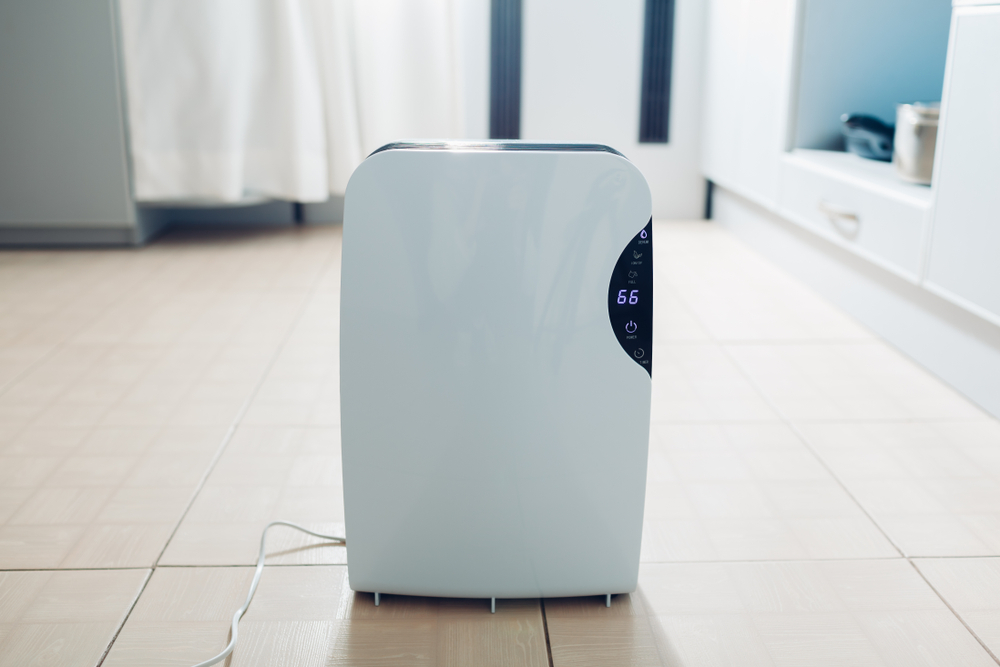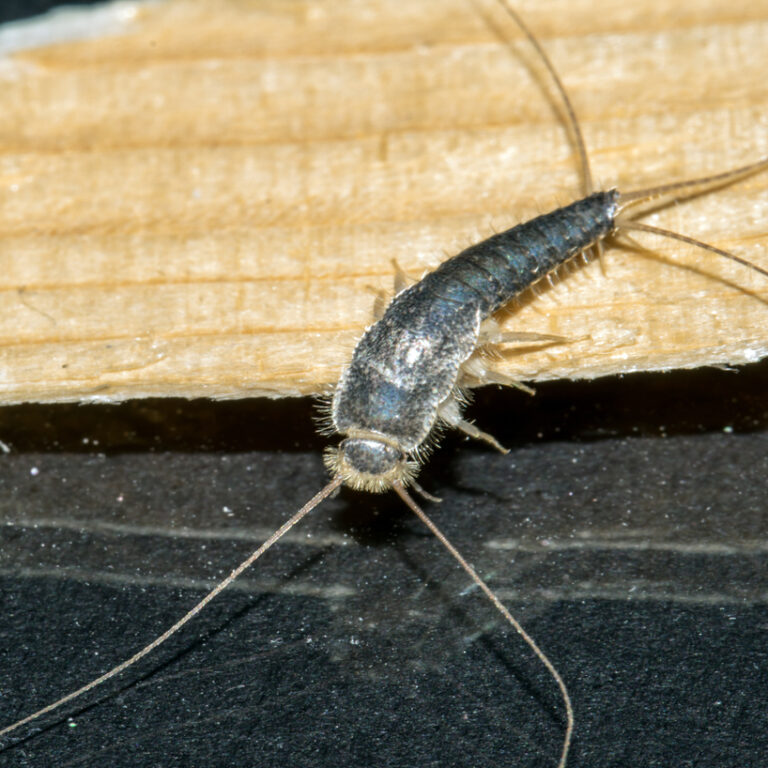Have you ever noticed some flat-looking bugs that are silver to brown in color running all over your home? Or, have you found their cast skin around your home? Your home may be the victim of a silverfish infestation.
While silverfish neither bite nor spread disease to humans they can be extremely pesky things. They’re hard to get rid of, and can even eat away at fabric and wood. Some people report that silverfish have significantly damaged their home or their clothing. Another problem with silverfish is that the debris that they carry can cause allergic reactions. Some people are even allergic to their molted skin and droppings.
There are many different ways that you can get rid of silverfish: using sticky traps, sprinkling diatomaceous earth and using natural remedies. We’ll look at the reasons why silverfish invade your home, how to prevent them from infesting your home and how to get rid of silverfish in detail in this article.
Reasons They Invade Homes
The reason why you have silverfish in your home is because you’ve created an excellent environment for them to thrive in. Some of these reasons may include:
- It’s incredibly humid. If your home has silverfish, it likely means that it’s too moist and humid. Silverfish need a humidity of about 75 percent and over to survive.
- There’s plenty to eat. Silverfish eat sugary substances that are otherwise known as polysaccharides. Beside the obvious food items, they can be found in book glue, carpet fibers, fabrics and even furniture.
- There are plenty of places to hide. In order to thrive, there must be plenty of places to hide. This means that if you have clutter, like books and clothes on the ground, then these nooks and crannies make it easy for silverfish to hide.
Before attempting to get rid of silverfish, you need to make sure that the environment is no longer the perfect place for them to call home or they will inevitably come crawling back… pun intended.
4 Preventative Measures
Lets make your home as uninviting and unappealing to silverfish as possible. Preventative measures go a long way in keeping your home free from infestations.
#1. Reduce Overall Humidity

As mentioned previously, silverfish LOVE humidity. They need a lot of moisture to survive, and if you see any of these little critters in your home, there’s a good chance that there’s just too much moisture around. This can be problematic for your walls and your floor, as the high levels of moisture can result in mold, fungi and other issues.
Some common solutions for reducing the humidity in your home include:
- Ventilating closed rooms and attics
- Opening the windows to allow for more air circulation
- Getting rid of any standing water
- Installing a bathroom fan in the shower areas
- Installing a dehumidifier throughout the home
- Running the AC
You want to keep your relative humidity at about 30 and 40%. High relative humidity could possibly exacerbate health conditions and lead to illnesses.
#2. Get Rid of Clutter
In order to survive, silverfish must have places to hide. If you have a lot of clutter in your home, they’ll have lots of nooks and crannies to stow away in. Get rid of any loose paper, cardboard boxes and any other types of hiding places. Here are some tips for getting rid of clutter:
- Get rid of paper clutter by storing information digitally whenever possible
- Donating or giving away unwanted items
- Getting rid of items that no longer make you happy
Getting rid of clutter can feel very therapeutic. You’ll also likely find that a clutter-free home can greatly improve your mental health.
#3. Dust and Vacuum Often
Silverfish live off polysaccharides that are found on the ground and in dust and dirt. By getting rid of their food source, you’ll be able to ensure that most silverfish will stay away. Dust and vacuum your home often.
These also means you should ensure food is covered and sealed when not being eaten so they are not attracted by the feast.
To ensure that you’re doing a thorough job, dust before you vacuum. This way, any dust particles that float in the air will settle by the time that you start vacuuming.
#4. Seal Cracks and Crevices
Little cracks around the door frames or window frames make it easy for silverfish to enter your home. Plug up their entrances by sealing any cracks and crevices that you see with caulk. Most caulk will come in squeeze tubes and are fairly easy to apply. They can seal any cracks that are up to one quarter of an inch thick.
3 Ways to Get Rid of Silverfish
Now that your home is no longer a place where silverfish want to live, you’ll need to get rid of any of the colonies that are already residing in your home. Depending on how infested your home is, this can take some time. Patience is key if you want to be rid of silverfish for good.
#1. Use Sticky Traps and Poison
Most of these sticky traps contain boric acid and other inert ingredients, so you’ll want to keep them away from children and pets. Boric acid is toxic and harmful to both people and pets if inhaled, so make sure that you only place these sticky traps and poisons in areas where no one can get to them.
You might need to set up several sticky traps over the course of several days to catch all of the silverfish. Once you’ve caught them, you can toss the used sticky traps in the trash.
#2. Sprinkle Diatomaceous Earth
Diatomaceous earth is used to kill many bugs and Silverfish are no exception. Look for food-grade powder, as it’s higher in quality and less toxic. Sprinkle this powder in infected areas. This powder is a mineral that will rub on the outer shells of the silverfish and lower their defense system. It’ll cause them to become dehydrated and eventually die.
It’s important to keep in mind that diatomaceous earth is not like boric acid. It won’t kill off the silverfish immediately. In fact, it takes about 7 to 14 days to see results, so patience is key. You might see the silverfish run over the diatomaceous earth without any issues the first several days. Rest assured that these pests will start to die off with time.
#3. Rely on Natural Remedies

You can also try natural remedies instead of relying on chemicals. This may be the better alternative if you’re concerned about toxins or if you have young children and pets at home. Some natural remedies that many people claim can help get rid of silverfish include:
- Cedar oil and shavings. Silverfish appear to be repelled by the smell of cedar oil and shavings. Try spraying cedar oil or placing cedar shavings in infected areas. Replace the shavings or respray the oil every week. This should scare the silverfish away.
- Cinnamon. If you love cooking, you likely already have this common ingredient in your pantry. Place cinnamon sticks, spray cinnamon oil or sprinkle ground cinnamon in infected areas.
- Cloves. Dried cloves contain eugenol, which repels silverfish. Simply toss some whole cloves in the infected area, and you should scare the silverfish away.
- Dried bay leaves. Like with cinnamon and cedar oil, the smell of dried bay leaves repel silverfish. Switch out the bay leaves every couple of days for optimal efficacy.
- Salt. Silverfish love salt! If you sprinkle salt into infected areas, the silverfish will eat it all up. The salt will then cause them to become dehydrated, which kills them. Another benefit of sprinkling salt is that salt absorbs dampness, which may be one of the main reasons why silverfish have moved into your home.
Other natural remedies that can get rid of silverfish include citrus fruits, cucumber peels and cloves. Consider combining different oils or natural remedies together to double the effectiveness.
Get Rid of Silverfish in No Time
With some patience and persistence, you can easily get rid of silverfish in no time. As these pests won’t bite and spread germs, you don’t have to worry about them too much, as they won’t cause you too much harm unless you’re dealing with a large infestation.
Although these pests are also rather easy to get rid of, you’ll need to maintain your home in the future to prevent a reinfestation. If the humidity goes up by too much or if you start to leave clutter out again, you’ll notice that these pests will move back in within no time.
